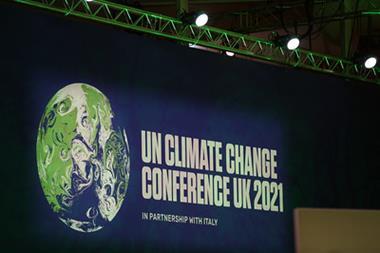GRII will help sectors across the global economy quantify the value of building climate resilience, and the costs of doing nothing
A Global Resilience Index Initiative (GRII) multi-partner taskforce had its formal launch at COP26 Adaptation Day.
GRII will provide a globally consistent model for the assessment of resilience across all sectors and geographies. It will be a curated, open-source resource offering high level metrics across the built environment, infrastructure, agriculture and societal exposures with many potential applications in aggregated risk management worldwide.
Its mission is to address the data emergency that is contributing to the climate crisis by helping sectors across the global economy quantify the value of building climate resilience and the costs of doing nothing.
It will enable asset owners to compare portfolio risks across geographies and hazards, as well as helping countries to prioritise national adaptation investments.
Mark Carney, UN special envoy on Climate Action and Finance, said: “Discipline and transparency over alignment will also play a critical role for climate resilient development. GRII can play an important role by creating a shared understanding of mounting physical climate risks. In turn, this will help close the insurance protection gap and direct investment and aid to where they are needed the most.”
Mami Mizutori, assistant secretary-general and special representative of the secretary-general for Disaster Risk Reduction in the UNDRR, added: “GRII has the potential to support all sectors in the management of adaptation and resilience, but action and support is required from the private and public sectors to further globalise the initiative.
”The next steps are to ensure that countries are able to make full use of the GRII’s potential, particularly at the strategic risk assessment stage, and support governments in making critical climate investment decisions.”
The GRII draws upon significant cross-sector risk modelling experience, including public-private partnerships between governments, academia, insurance and engineering.
The coalition behind the GRII is seeking to achieve two initial goals:
- Offer global open reference risk data using metrics built on insurance risk modelling principles;
- Provide shared standards and facilities applicable to a wide range of uses, including corporate climate risk disclosure, national adaptation planning and reporting, and the planning of pre-arranged humanitarian finance.
Emma Howard Boyd, chair of the Environment Agency and chair of the CGFI Advisory Board, said: “In the last year, the heatwave in Vancouver, the floods in Germany, the polar vortex in Texas and the drought in Madagascar have shown everyone the horrifying human costs of climate change.
”By making our systems and economies more resilient to climate disruption we can save millions of lives and livelihoods. To inject pace into this vital agenda we need adaptation and resilience to be clearly understood by governments, businesses and communities. The Global Resilience Index Initiative helps deliver that.”
GRII partners and supporters are:
- Coalition for Disaster Resilient Infrastructure (CDRI)
- Coalition for Climate Resilient Investment (CCRI)
- Fathom
- GEM Foundation
- Insurance Development Forum (IDF)
- Oasis Loss Modelling Framework
- UK Centre for Greening Finance and Investment (CGFI)
- United Nations office for Disaster Risk Reduction (UNDRR)
- University of Oxford
- Willis Towers Watson




















No comments yet